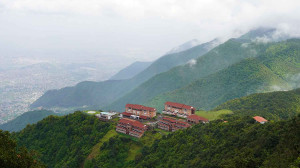Money
Sugarcane farmers waiting anxiously for cash subsidy
The government has promised to pay sugarcane growers a cash subsidy of Rs70 per quintal.
Om Prakash Thakur
Sugarcane farmers say the government has been delaying their cash subsidy when they desperately need money with the festival season fast approaching.
The government has promised to pay sugarcane growers a cash subsidy of Rs70 per quintal, but they say they haven’t received their money for the last seven months.
The floor price of sugarcane has been set at Rs610 per quintal. This is the minimum price sugar mills have to pay the farmers for their crops. Out of this amount, the government chips in Rs70.
The government announced a cash subsidy scheme in 2018 after the farmers complained that the money they get from the mill owners was not sufficient to cover their costs.
Last year, Indu Shankar Sugar Mill bought 2.82 million quintals from 10,678 farmers, Mahalaxmi Sugar Mill bought 1.095 million quintals from 17,030 farmers, and Annapurna Sugar Mill bought 0.2 million quintals from 1,378 farmers.
The government subsidy on the total 4.17 million quintals of sugarcane procured by the mills comes to Rs292.5 million.
Farmer Rabindra Raya of Pipariya, Kawilasi Rural Municipality-1 says the government has mistreated the sugarcane growers by not releasing their subsidy amount.
“We can do nothing except wait for the money,” said Raya, who is yet to receive Rs56,000 from the government.
Surendra Mahato from Harion has also not received Rs74,200 from the government for the 1,060 quintals of sugarcane he sold in the last fiscal year.
Mahato had planned to celebrate the festival this year with the amount received from the government. But now he is looking for a loan as there is no sign that the government will pay him anytime soon.
“The government has failed to notice our problems,” he complained. “The prolonged delay has made it difficult for the farmers to feed their families.”
Leaders of the sugarcane farmers say that the perpetual delay in making payment has discouraged them from planting sugarcane. Many have given up growing sugarcane altogether, they say.
Kapil Muni Mainali, president of the Federation of Sugarcane Producers Association,
says that every year the government has been late in paying the farmers.
“As a result, they are not willing to grow sugarcane, which has been a major cash crop in the region,” said Mainali. “Farmers once used to plant sugarcane on 26,000 hectares in the district, but now the acreage has shrunk to one-fourth of that.”
Purushottam Baral, chief of the District Treasury Comptroller Office in Sarlahi, says the government has not released the subsidy budget of the last fiscal year.
“Once we receive the money from the Ministry of Finance, we will pay the farmers within two weeks,” said Baral.
“We have already made a list of the farmers and the amounts of sugarcane they have sold to the mills. We have also updated the details of their bank accounts so that they can get their money speedily.”
Government statistics show that sugarcane production and acreage have shrunk in the last four years, as farmers are switching to other crops due to payment delays and other hassles.
The figures show that output has been in continuous decline since fiscal 2017-18.
According to the Ministry of Agriculture and Livestock Development, Nepali farmers grew 3.67 million tonnes of sugarcane on 78,609 hectares in 2017-18.
Output dropped sharply to 3.18 million tonnes and the acreage shrank to 64,354 hectares in 2020-21.
The ministry says that production has been falling due to the high cost and increasing market risk.
Sugarcane farmers say that difficulties in getting payment from the mills and chemical fertiliser from the government have discouraged them from planting the cash crop.
“Sugarcane farmers have to wait for months to get their money, and so most of them have switched to other crops,” said Mainali.




 17.44°C Kathmandu
17.44°C Kathmandu















